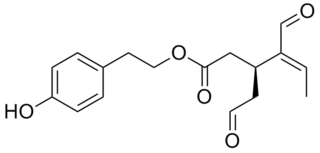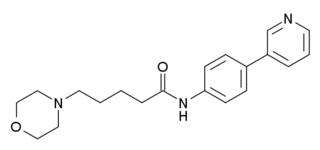Neuroprotection refers to the relative preservation of neuronal structure and/or function. In the case of an ongoing insult the relative preservation of neuronal integrity implies a reduction in the rate of neuronal loss over time, which can be expressed as a differential equation. It is a widely explored treatment option for many central nervous system (CNS) disorders including neurodegenerative diseases, stroke, traumatic brain injury, spinal cord injury, and acute management of neurotoxin consumption. Neuroprotection aims to prevent or slow disease progression and secondary injuries by halting or at least slowing the loss of neurons. Despite differences in symptoms or injuries associated with CNS disorders, many of the mechanisms behind neurodegeneration are the same. Common mechanisms of neuronal injury include decreased delivery of oxygen and glucose to the brain, energy failure, increased levels in oxidative stress, mitochondrial dysfunction, excitotoxicity, inflammatory changes, iron accumulation, and protein aggregation. Of these mechanisms, neuroprotective treatments often target oxidative stress and excitotoxicity—both of which are highly associated with CNS disorders. Not only can oxidative stress and excitotoxicity trigger neuron cell death but when combined they have synergistic effects that cause even more degradation than on their own. Thus limiting excitotoxicity and oxidative stress is a very important aspect of neuroprotection. Common neuroprotective treatments are glutamate antagonists and antioxidants, which aim to limit excitotoxicity and oxidative stress respectively.

Oleocanthal is a phenylethanoid, or a type of natural phenolic compound found in extra-virgin olive oil. It appears to be responsible for the burning sensation that occurs in the back of the throat when consuming such oil. Oleocanthal is a tyrosol ester and its chemical structure is related to oleuropein, also found in olive oil.

Red yeast rice, red rice koji, red fermented rice, red kojic rice, red koji rice, anka, or angkak, is a bright reddish purple fermented rice, which acquires its color from being cultivated with the mold Monascus purpureus. Red yeast rice is what is referred to as a "koji" in Japanese, meaning "grain or bean overgrown with a mold culture", a food preparation tradition going back to ca. 300 BC. In both the scientific and popular literature in English that draws principally on Japanese traditional use, red yeast rice is most often referred to as "red rice koji." English language articles favoring Chinese literature sources prefer the translation "red yeast rice."

Chrysin, also called 5,7-dihydroxyflavone, is a flavone found in honey, propolis, the passion flowers, Passiflora caerulea and Passiflora incarnata, and in Oroxylum indicum. It is extracted from various plants, such as the blue passion flower. Following oral intake by humans, chrysin has low bioavailability and rapid excretion. It is under basic research to evaluate its safety and potential biological effects.

Benzofuranylpropylaminopentane is a drug with an unusual effects profile. It can loosely be grouped with the stimulant or antidepressant drug families, but its mechanism of action is quite different.

U-89843A (PNU-89843) is a sedative drug which acts as an agonist at GABAA receptors, specifically acting as a positive allosteric modulator selective for the α1, α3 and α6 subtypes. It has sedative effects in animals but without causing ataxia, and also acts as an antioxidant and may have neuroprotective effects. It was developed by a team at Upjohn in the 1990s.

Rhynchophylline is an alkaloid found in certain Uncaria species (Rubiaceae), notably Uncaria rhynchophylla and Uncaria tomentosa. It also occurs in the leaves of Mitragyna speciosa (kratom), a tree native to Thailand. Chemically, it is related to the alkaloid mitragynine.

Ladostigil (TV-3,326) is a novel neuroprotective agent being investigated for the treatment of neurodegenerative disorders like Alzheimer's disease, Lewy body disease, and Parkinson's disease. It acts as a reversible acetylcholinesterase and butyrylcholinesterase inhibitor, and an irreversible monoamine oxidase B inhibitor, and combines the mechanisms of action of older drugs like rivastigmine and rasagiline into a single molecule. In addition to its neuroprotective properties, ladostigil enhances the expression of neurotrophic factors like GDNF and BDNF, and may be capable of reversing some of the damage seen in neurodegenerative diseases via the induction of neurogenesis. Ladostigil also has antidepressant effects, and may be useful for treating comorbid depression and anxiety often seen in such diseases as well.

WAY-317538 (SEN-12333) is a drug that acts as a potent and selective full agonist for the α7 subtype of neural nicotinic acetylcholine receptors. It was not the most potent compound in the series, but was selected for further development on the basis of its high selectivity over related receptors, ease of synthesis, and good in vivo properties including high oral bioavailability and good brain penetration. It has nootropic and neuroprotective effects in animal studies, and is being investigated as a potential treatment for neurodegenerative and neurocognitive conditions including Alzheimer's disease and schizophrenia.

Repinotan (BAYx3702), an aminomethylchroman derivative, is a selective 5-HT1A receptor full agonist with high potency and efficacy. It has neuroprotective effects in animal studies, and was trialed in humans for reducing brain injury following head trauma. It was subsequently trialed up to phase II for treatment of stroke, but while side effects were mild and consisted mainly of nausea, repinotan failed to demonstrate sufficient efficacy to justify further clinical trials. However, repinotan continues to be investigated for other applications, and was found to be effective at counteracting the respiratory depression produced by morphine, though with slight reduction in analgesic effects.

Indantadol is a drug which was formerly being investigated as an anticonvulsant and neuroprotective and is now under development for the treatment of neuropathic pain and chronic cough in Europe by Vernalis and Chiesi. It acts as a competitive, reversible, and non-selective monoamine oxidase inhibitor, and as a low affinity, non-competitive NMDA receptor antagonist. A pilot study of indantadol for chronic cough was initiated in October 2009 and in April 2010 it failed to achieve significant efficacy in neuropathic pain in phase IIb clinical trials.

P7C3 is a drug related to latrepirdine (dimebon) which has neuroprotective and proneurogenic effects and may be potentially useful for the treatment of Alzheimer's disease and similar neurodegenerative disorders. The pharmacological effects of P7C3 in vitro resemble those of endogenous proneurogenic peptides such as fibroblast growth factor 1 (FGF-1), and the proneurogenic activity of P7C3 was around thirty times that of latrepirdine when they were compared in mice. P7C3 was chosen for further animal studies on the basis of favorable pharmacokinetic factors, such as its high oral bioavailability and long duration of action, but several other related compounds showed similar activity such as the more potent fluorinated analogue P7C3A20 which is up to ten times stronger again, and the methoxy analogue P7C3-OMe, for which it was determined that the (R) enantiomer is the active form.

SER-601 (COR-167) is a drug which acts as a potent and selective cannabinoid CB2 receptor agonist, based on a quinolone-3-carboxylic acid core structure, with 190 times selectivity for CB2 over the related CB1 receptor. It has analgesic effects in animal studies, as well as neuroprotective effects, but without a "cannabis high" due to its low affinity for CB1. A number of related compounds are known, almost all of which have high selectivity for CB2.

Quisqualamine is the α-decarboxylated analogue of quisqualic acid, as well as a relative of the neurotransmitters glutamate and γ-aminobutyric acid (GABA). α-Decarboxylation of excitatory amino acids can produce derivatives with inhibitory effects. Indeed, unlike quisqualic acid, quisqualamine has central depressant and neuroprotective properties and appears to act predominantly as an agonist of the GABAA receptor and also to a lesser extent as an agonist of the glycine receptor, due to the facts that its actions are inhibited in vitro by GABAA antagonists like bicuculline and picrotoxin and by the glycine antagonist strychnine, respectively. Mg2+ and DL-AP5, NMDA receptor blockers, CNQX, an antagonist of both the AMPA and kainate receptors, and 2-hydroxysaclofen, a GABAB receptor antagonist, do not affect quisqualamine's actions in vitro, suggesting that it does not directly affect the ionotropic glutamate receptors or the GABAB receptor in any way. Whether it binds to and acts upon any of the metabotropic glutamate receptors like its analogue quisqualic acid however is unclear.

Activity-dependent neuroprotector homeobox is a protein that in humans is encoded by the ADNP gene.

Deoxygedunin, or 14,15-deoxygedunin, is a naturally occurring tetranortriterpenoid isolated from the Indian neem tree, a plant that has been used in India since ancient times as a remedy for various ailments. Deoxygedunin has been found to act as a potent, selective, small-molecule agonist of TrkB, the main receptor of brain-derived neurotrophic factor (BDNF). It produces TrkB-dependent neurotrophic and neuroprotective effects in mice and enhances learning processes. In addition, deoxygedunin evokes rapid TrkB-dependent antidepressant-like effects in the forced swim test, an animal model of depression, similarly to 7,8-dihydroxyflavone (7,8-DHF) and ketamine, and notably with a greater potency than 7,8-DHF. The compound was discovered by the same group that identified 7,8-DHF and N-acetylserotonin as TrkB agonists.

7,8,3′-Trihydroxyflavone (7,8,3'-THF) is a flavone and small-molecule agonist of TrkB, the main receptor of brain-derived neurotrophic factor (BDNF), that was derived from tropoflavin (7,8-DHF). Relative to tropoflavin, 7,8,3'-THF is 2–3-fold more potent in vitro as a TrkB agonist. 7,3’-Dihydroxyflavone (7,3'-DHF) is also more potent than tropoflavin in vitro, indicating that a 3'-hydroxy group on the B-ring enhances TrkB agonistic activity. 7,8,3'-THF has been tested in vivo and was found to produce TrkB-dependent neuroprotective effects in mice similarly to tropoflavin.

Kaitocephalin is a non-selective ionotropic glutamate receptor antagonist, meaning it blocks the action of the neurotransmitter glutamate. It is produced by the fungus Eupenicillium shearii. Although similar molecules have been produced synthetically, kaitocephalin is the only known naturally occurring glutamate receptor antagonist. There is some evidence that kaitocephalin can protect the brain and central nervous system, so it is said to have neuroprotective properties. Kaitocephalin protects neurons by inhibiting excitotoxicity, a mechanism which causes cell death by overloading neurons with glutamate. Because of this, it is of interest as a potential scaffold for drug development. Drugs based on kaitocephalin may be useful in treating neurological conditions, including Alzheimer's, amyotrophic lateral sclerosis (ALS), and stroke.

BNN-20, also known as 17β-spiro-(androst-5-en-17,2'-oxiran)-3β-ol, is a synthetic neurosteroid, "microneurotrophin", and analogue of the endogenous neurosteroid dehydroepiandrosterone (DHEA). It acts as a selective, high-affinity, centrally active agonist of the TrkA, TrkB, and p75NTR, receptors for the neurotrophins nerve growth factor (NGF) and brain-derived neurotrophic factor (BDNF), as well as for DHEA and DHEA sulfate (DHEA-S). The drug has been suggested as a potential novel treatment for Parkinson's disease and other conditions.

BNN-27, also known as 17α,20R-epoxypregn-5-ene-3β,21-diol, is a synthetic neurosteroid and "microneurotrophin" and analogue of the endogenous neurosteroid dehydroepiandrosterone (DHEA). It acts as a selective, high-affinity, centrally active agonist of the TrkA and p75NTR, receptors for nerve growth factor (NGF) and other neurotrophins, as well as for DHEA and DHEA sulfate (DHEA-S). BNN-27 has neuroprotective and neurogenic effects and has been suggested as a potential novel treatment for neurodegenerative diseases and brain trauma.



















